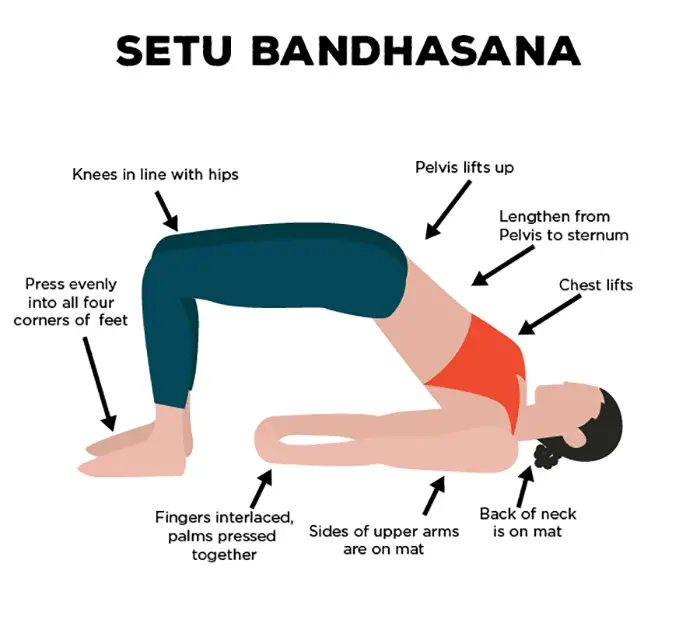How do I stop myself from stress eating? By Mindful Eating And Yoga
Jump To:
Stress affects the mind and behavior in a variety of ways such as fostering worrying, indecision, negativity, and restlessness. Muddles thinking and impair judgment. Triggers irritability, anger, depression, apathy, alienation, and forgetfulness. Loss of sex drive, and can make one more accident-prone. Increased smoking, drinking, etc. Stress eating is one such issue and you’ll know how to stop stress eating as you read through. It is important that you eat mindfully and do some yoga to relieve stress and stop stress eating. Eating mindfully also includes eating foods that calm nerves for immediate relief.
It also alters appetite which is eating more or less. Emotional eating or stress eating is one such stress-relieving distraction that one goes for. But it has many side effects such as gaining abnormal weight when overeating and being prone to lose weight when not taking sufficient food.
Emotional Eating / Stress Eating:
Stress eating means, your eating patterns are decided based on your emotional status. In this case, the food cravings are a distraction rather than a sufficing the hunger.
Stress Eating Symptoms:
Symptoms are basically any emotional stressors such as the loss of a loved one, boredom, feeling low, low self-esteem, etc.
Emotional stressors may vary differently for different people. It depends on the individual’s stress levels.
The first and primary symptom you can observe and identify is normal hunger is caused by the body. But emotional hunger is not connected to the body and is entirely dependent on the emotion of the person.
- Check if you’re really hungry.
- If not, you need to address the stressor.
- Don’t suppress the cravings, instead, eat mindfully. One aspect of eating mindfully is incorporating foods that help a good gut brain connection such as probiotics.
Yoga To Stop Emotional Eating / Stress Eating:
This yoga to stop stress eating helps you build up and balance the energies to fight your emotions and address stress eating effectively.
1. Virabhadrasana 1 (Warrior Pose 1):
This pose makes the entire body strong. It also helps one develop humility and gratitude, and connect to the power that lies within. This helps you keep away from stress and stress eating.

Virabhadrasana 1 Steps:
- Keep your legs fore feet apart, and with your hands on your waist. Open your right foot 90 degrees to the right and turn the left foot 65 degrees to the right, so that the pelvis turns towards the right leg.
- Inhale; stretch your arms up, palms facing each other. Tuck in your pelvis and elongate the spine.
- Exhale; bend the right knee that is directly in line with the right ankle and keep the thigh parallel to the floor. Press the left leg deep into the floor and rest the torso on the pelvis.
- Inhale; bring the arms down and roll them back to interlace the fingers.
- Exhale; extend the torso forward towards the right knee. Hold the pose breathing deeply for five to 10 breaths.
- Inhale; lift the torso up and release the pose. Repeat the same on the left leg.
2. Balasana (Child pose):
The child pose is a very healing pose for the body and mind. It calms the mind as the focus shift to the breath. It releases tension from the spine and the hips. This pose releases tension and fatigue from the body and helps improve circulation.
This allows us to control our cravings as it helps us to accept and surrender to the moment.

Balasana Steps:
- Come on the knees and join the big toes, thighs, and knees together.
- Place the palms on the floor and separate the knees just wide enough that the chest can rest on the thighs. (If this is not comfortable, then place a bolster between the knees. If your hips don’t touch the ankle place a blanket under the feet.)
- Inhale; raise the arms up and extend the spine.
- Exhale; come forward and rest the torso on the floor between the knees.
- Make a pillow with the palms and rest the forehead on the palms. Breathing deeply for one to two minutes.
- Remember to stay still and avoid movement while you hold the pose. Inhale; raise the arms up and as you exhale lower the arms and release the pose.
3. Setubandhasana (Bridge Pose):
This pose will strengthen the legs and open the shoulders and stabilize them. It stretches the neck, improves blood circulation, and balances hormones. It also makes the body and mind strong.

Setubandhasana Steps:
- Lie down on the floor with palms close to the body and the legs, hip distance apart.
- Bend the knees with the feet in line with the knees and chin down towards the chest.
- Inhale; press the feet on the floor and contract the inner thighs. Lift the hips off the floor and push the tailbone towards the floor.
- Exhale; keep the palms on the floor or slide the hands under the hips. Clasp the hands together to interlock the palms.
- Hold the pose breathing deeply in ujjayi breath for 30 to 50 seconds. Work engaging the thighs and lifting the chest higher off the floor, so that the chest touches the chin and the shoulders squeeze towards each other.
- Exhale; lower the chest, belly, and then hips on the floor to release the pose. Straighten the legs and rest and focus on the breath.
12 Best Tips To Stop Stress Eating – How do I stop myself from stress eating?
- Balance your food choices with physical activity to achieve your ideal body weight.
- Include exercise, yoga, meditation, prayer, hypnosis, and biofeedback in your daily life.
- Eating smaller frequent meals ensures a steady stream of energy and has a calming effect on the brain.
- Plan your activities and food in advance. Shop smart. Ensure access to and availability of healthy foods.
- Choose adequate amounts of fresh fruits and vegetables like amla, citrus fruits, tomatoes, green peppers, green leafy vegetables, kiwi, broccoli, and strawberries to ensure good Vitamin C status.
- Choose whole grains like oats, barley, brown rice, and whole wheat; pulses, nuts, and seeds, low-fat dairy, seafood, lean meats, green leafy vegetables, and wheat germ to ensure adequate intake of Vitamin B and Zinc.
- Minimize the intake of white flour, white rice, and sugar.
- Avoid junk food and poor-quality fat (hydrogenated trans fats).
- Include good quality fat through natural sources like nuts, seeds, fatty fish, and cold-pressed oils.
- Snack smart on fresh fruits, dry fruits, nuts, seeds, roasted whole grains, soups, salads, and yogurt.
- Drink plenty of fluids and remain well hydrated. Green tea, Jasmine tea, and Chamomile tea calm the mind.
- Drink tea, coffee, and alcohol in moderation.
Mindful Eating Practice – How to practice mindful eating?
Practicing mindful eating keeps you away from physical ailments caused by emotional eating. It is important to see that you are not adding any physical uneasiness to the stress. Healthy mindful eating reduces cravings and also alleviates stress. Take time to smell, taste, and celebrate. Your meal deserves more than just mindless chewing
Mindful eating is about being aware of the food we eat, giving it all of our attention, and building a deep connection with what goes into our bodies. Investing our five senses in the act of cooking and eating is an intensely rewarding experience. For one, you experience food deeply, so there is satiety with a lower quantity of food than if we were mindlessly chewing, resulting in better well-being, and even weight loss.
Psychologically, when you take time to look at and smell the food, it activates the salivary glands. Tasting every morsel, and chewing on the food slowly, ensures that the saliva starts acting on the starches and their digestion.
Putting more thought into what’s going onto your plate and into your body means you make better, more healthful choices for yourself. Eating mindfully makes you more closely connected with nature and the people you share a table with, be it family or friends. You learn to listen and be more receptive. Done mindfully, cooking and eating food becomes a pleasurable and restorative experience and not a mere chore we perform reflexively, or an activity done when boredom sets in.
Here are 6 ways to eat mindfully – Mindful eating techniques:
- Don’t just gulp your food. Even if you’re chewing enough you need to appreciate the food in front of you with all your five senses. (Listen to the sizzle of the tempering, see the colors of the salad, smell the aromas of the spices and herbs, feel the texture of the grains, and finally, taste every morsel.) This cannot be done on the run.
- Enjoying food won’t come easily, you need to practice with the whole family sitting down together for one meal a day, starting the meal with a note of gratefulness, either mentally or aloud (this one for the kids), being thankful for the sun, soil and water that made this food possible, are all excellent mealtime rituals that gently nudge the family towards mindful eating.
- Make the appearance beautiful. We use the dining table as a multi-purpose area. It is often cluttered with pending homework, bills, unopened mail, newspapers of the day, and a lot more. That doesn’t quite create the perfect setting for a meal, and we end up taking our dinner to the sofa. A simple arrangement like fresh herbs, small flowers in a jar, or fresh fruits in a bowl, makes for a delightful centerpiece on a clutter-free table. Don’t wait for those special guests to bring out the best crockery. Even a regular meal is worth celebrating. Serve and plate the food tastefully, in a way that’s appealing to the eye. Not just for Instagram, but also for yourself.
- Skip multitasking, although you might not go to the extent of turning off your phone, at least make sure it is beyond arm’s reach. The fake-news forwards on WhatsApp don’t need our urgent attention. YouTube kiddie videos have made millions because many parents choose to show their toddlers these videos on loop at mealtimes. It is best to nip this habit in the bud. Also, don’t forget to turn off the telly. Give your mealtime the attention and sanctity it deserves. Tune in instead of tuning out.
- Remember, food is not a crutch, sad over something? American sitcoms taught us that the best way to deal with this gloom is to bring the whole tub of ice cream to bed and watch a rom-com, with a box of tissues on the side. Boredom often makes us rummage the kitchen cabinets for snacks. Insomnia leads us to the fridge in search of chocolate or dessert. In all three cases, it isn’t hunger that leads us to food. Address the problem on hand creatively. Food is not the solution here. Stopping for a moment and asking ourselves if we are hungry, before reaching out for food, can be a revelation.
- Don’t stuff in the name of not wasting food. We tend to do this even if we’re full. It is a counter-intuitive habit, making us ignore the signals from our bodies. Don’t make wasting food a habit though. Serve small portions and go for seconds if you feel like it more.
